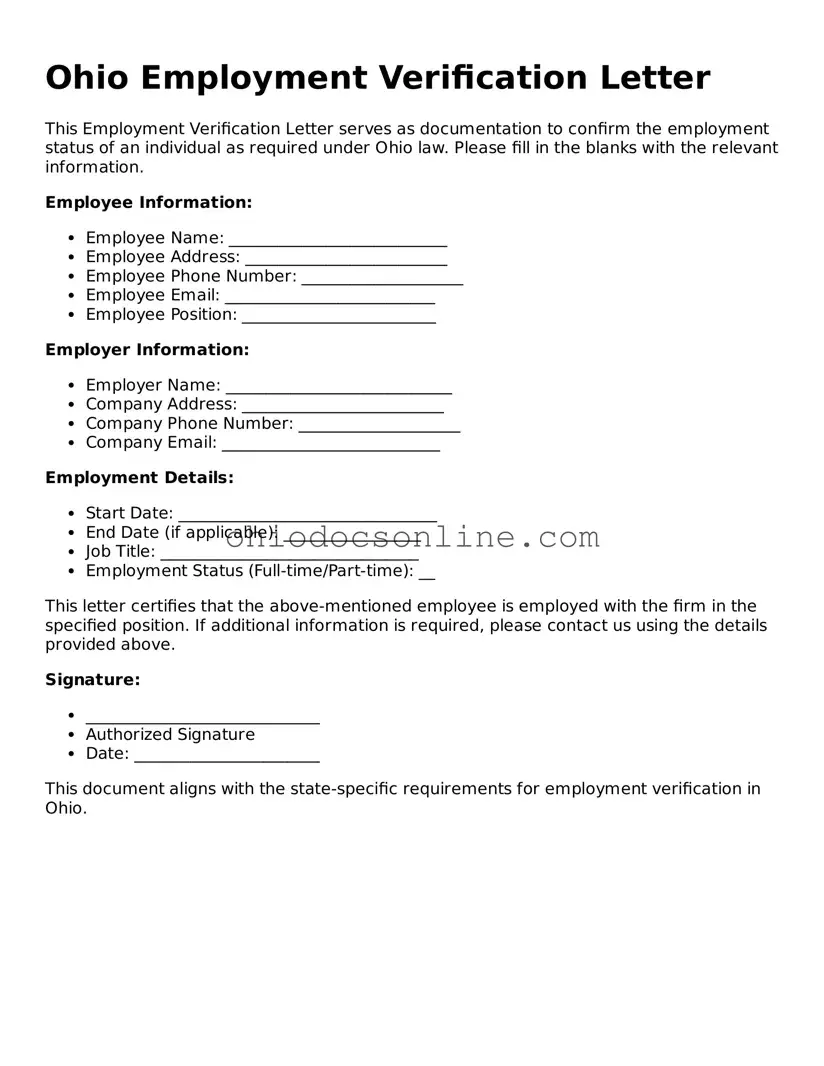Printable Employment Verification Template for Ohio
The Ohio Employment Verification form is a document used to confirm an individual's employment status and history in the state of Ohio. This form is essential for various purposes, including background checks, loan applications, and rental agreements. Understanding its significance can help both employers and employees navigate employment-related processes more effectively.
Open Editor
